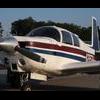Propeller RPM control issues
-
Members Online
- UteM20F
- mike_elliott
- Red Leader
- warbingtonmasonry
- phxcobraz
- MatthiasArnold
- eman1200
- Wingfree
- ElderWhitehead1
- CAV Ice
- natdm
- N177MC
- lanejacobs84
- cmorris
- acekng1
- dzeleski
- Captainhog
- Gflight
- warren.huisman
- 201er
- Jake@BevanAviation
- Yetti
- AndreiC
- Hank
- Hamburglar
- Jim Peace
- Aerodon
- ckb
- johnbkeck
- Raymond J1
- Ragsf15e
- Bondo
- phrogpilot73
- slowflyin
- Ibra
- GeeBee
- Rotorhead
- carguy4471
- richardbrochu27
- Adam_StPete


Recommended Posts
Join the conversation
You can post now and register later. If you have an account, sign in now to post with your account.